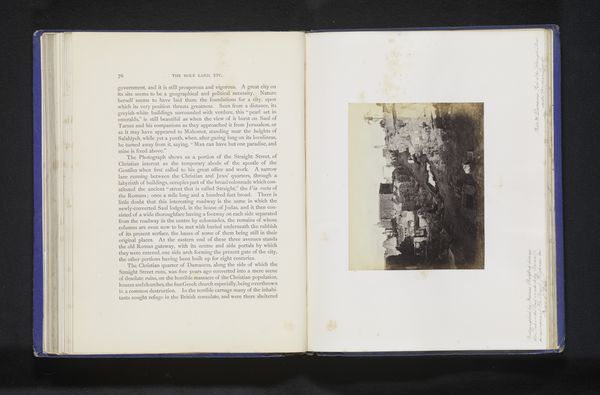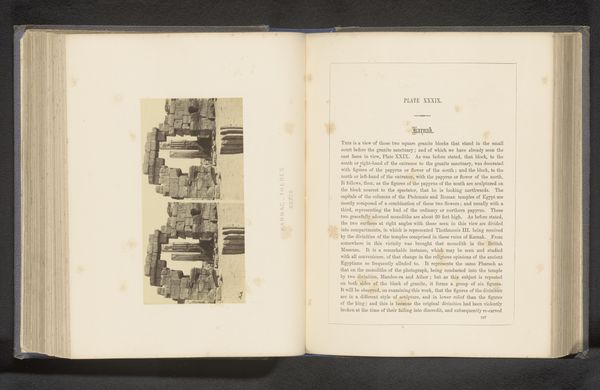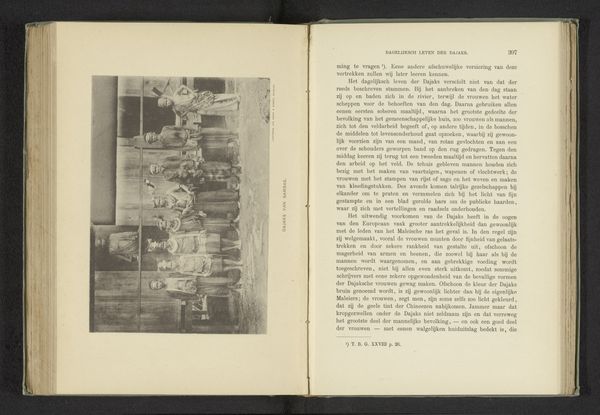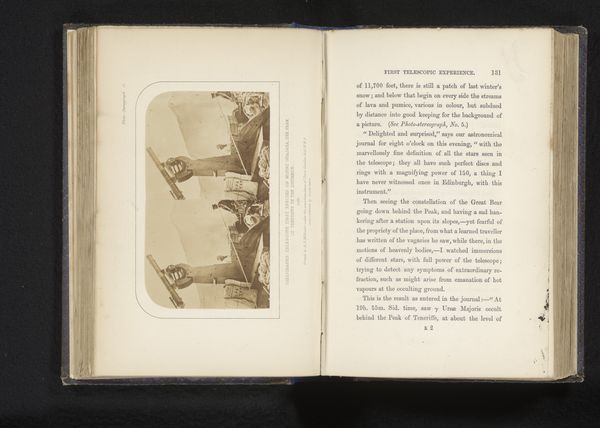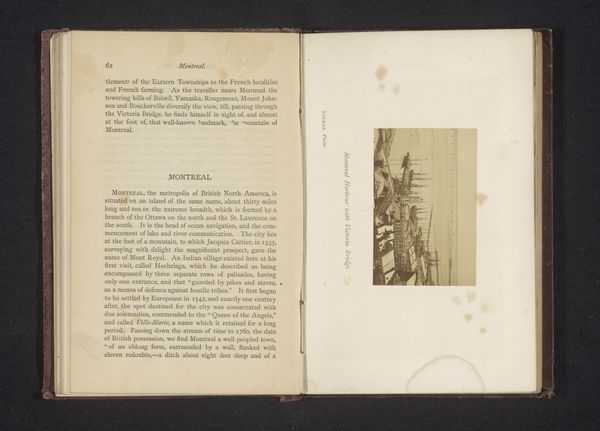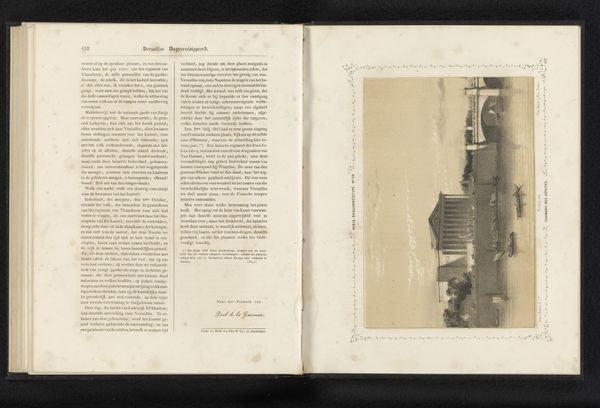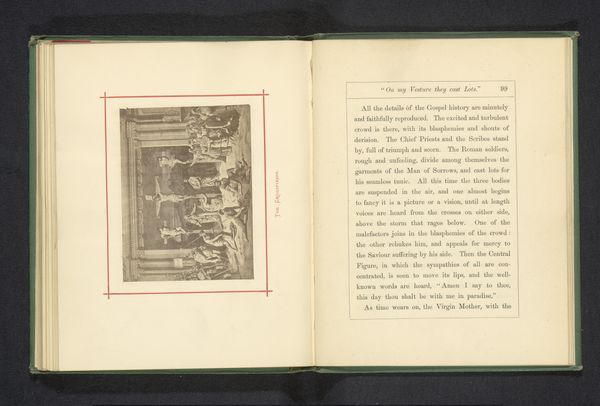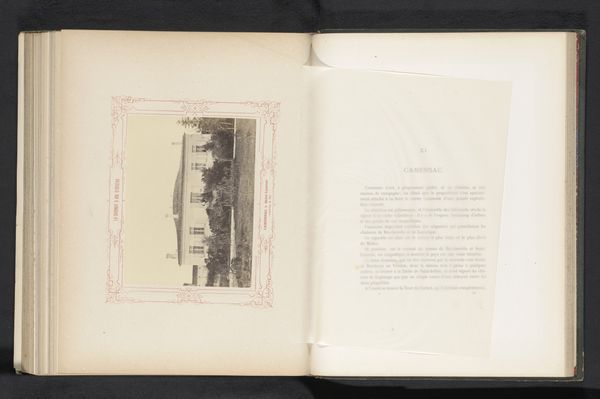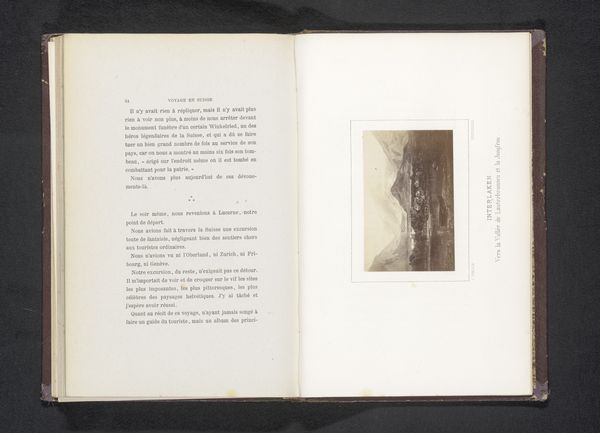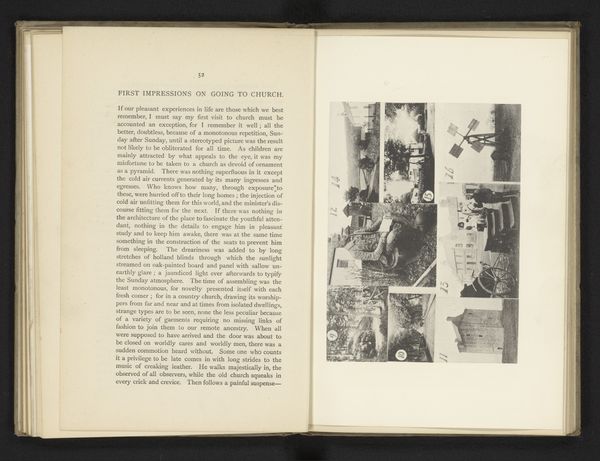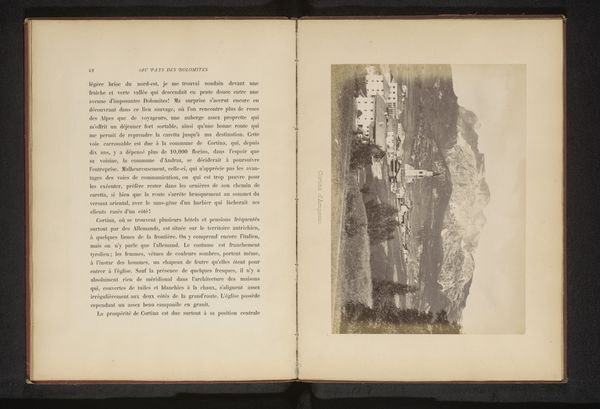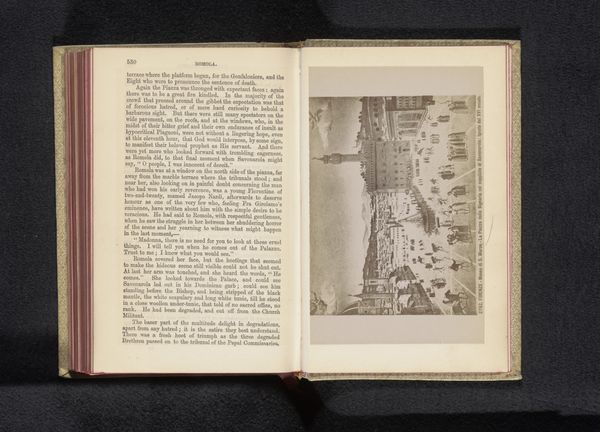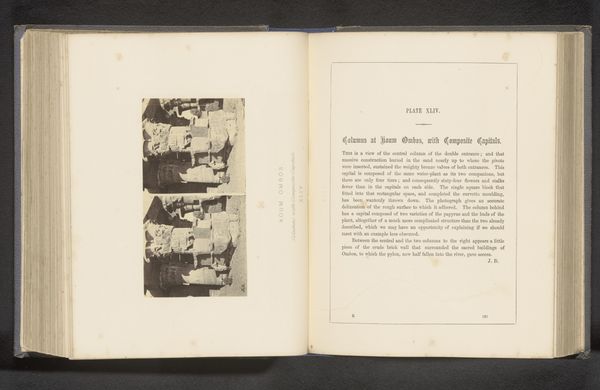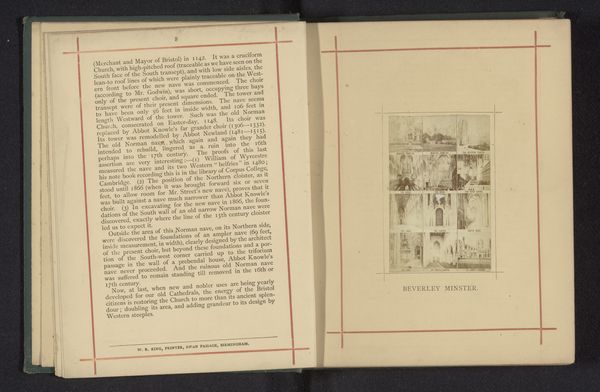
Dimensions: height 67 mm, width 119 mm
Copyright: Rijks Museum: Open Domain
Curator: Here we have a photograph, actually a gelatin-silver print dating from between 1856 and 1858, titled “View of El Teide from La Orotava,” credited to Charles Piazzi Smyth. What strikes you upon seeing it? Editor: An overwhelming sense of fragility. It is sepia-toned, the paper thin; and I am concerned, looking at those twin prints, for the people who must be enduring some kind of disaster! There is so little color. Curator: I'm interested that you focus on the human cost, because it is formally striking for its dual presentation: the stereoscopic view achieved here invites deep scrutiny. Two near-identical images allow the viewer's mind to synthesize depth from a flat picture, and creates an uncanny 3D viewing effect that was incredibly novel for the time. Editor: The uncanny is right! Looking closer at those towns or cities, it seems a terrible cascade of water—or even volcanic eruption perhaps? —has devastated these communities in Tenerife. Water is life, yes, but it also erodes. Note the crumbling stone. Perhaps this relates to narratives of destruction or biblical floods. Curator: Well, there’s definitely a compositional dichotomy between the man-made structures in the foreground, showing devastation, and the distant, impassive form of El Teide mountain. Observe how Smyth has carefully framed the shot: the stark angles and textures create a tension between geometry and wilderness. It really creates visual drama, wouldn't you agree? Editor: Absolutely, and El Teide does not look like it is necessarily to be trusted. Volcanic mountains in the Canary Islands signify something very powerful – forces that can indeed protect and nurture, but also erase communities, cultures. Curator: It's a beautiful example of 19th-century landscape photography, so carefully considered with light, and form to evoke particular ideas about human relationship to nature. Editor: For me, I walk away with more questions than answers. I wonder, who lived in those villages, what stories do these images have to share beyond formal presentation?
Comments
No comments
Be the first to comment and join the conversation on the ultimate creative platform.
